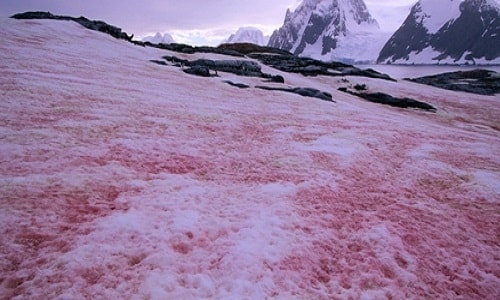Watermelon-colored snow at the North Pole
Snow in some parts of the Arctic is watermelon pink due to red algae blooms in frozen water.
 |
| Watermelon pink snow caused by algae blooms in the Arctic. Photo: Huffington Post. |
According to the Huffington Post, Arctic explorers observed the appearance of pink snow, also known as watermelon snow, centuries ago. This is the result of red algae blooming in frozen water. Algae bloom is a phenomenon of algae outbreaks in water, causing the oxygen content in the water to decrease, the water surface turns colors such as purple, pink, blue or red.
In a study published in the journal Nature Communications on June 22, scientists discovered that algae blooms cause ice to melt faster. Algae grow more strongly because climate change melts Arctic ice into liquid form, creating a favorable habitat for them.
The presence of red algae reduces snow's albedo, or ability to reflect light instead of absorbing it to generate heat. Over a 100-day period, the study found that snow containing red algae was 13 percent less reflective than white snow.
Melting ice is one of the prime conditions for algae to grow on snow. Large melt events like the one in 2012 (97% of Greenland’s ice sheet melted) are likely to occur with increasing frequency in the near future as a result of global warming. Snow surfaces containing red algae absorb more sunlight, causing the ice to melt faster.
"Algae need liquid water to bloom. So the melting of snow and ice on the surface controls the abundance of algae species. The more ice melts, the more algae there will be," said Steffi Lutz, lead author of the study at the University of Leeds, UK.
According to VNE
| RELATED NEWS |
|---|
